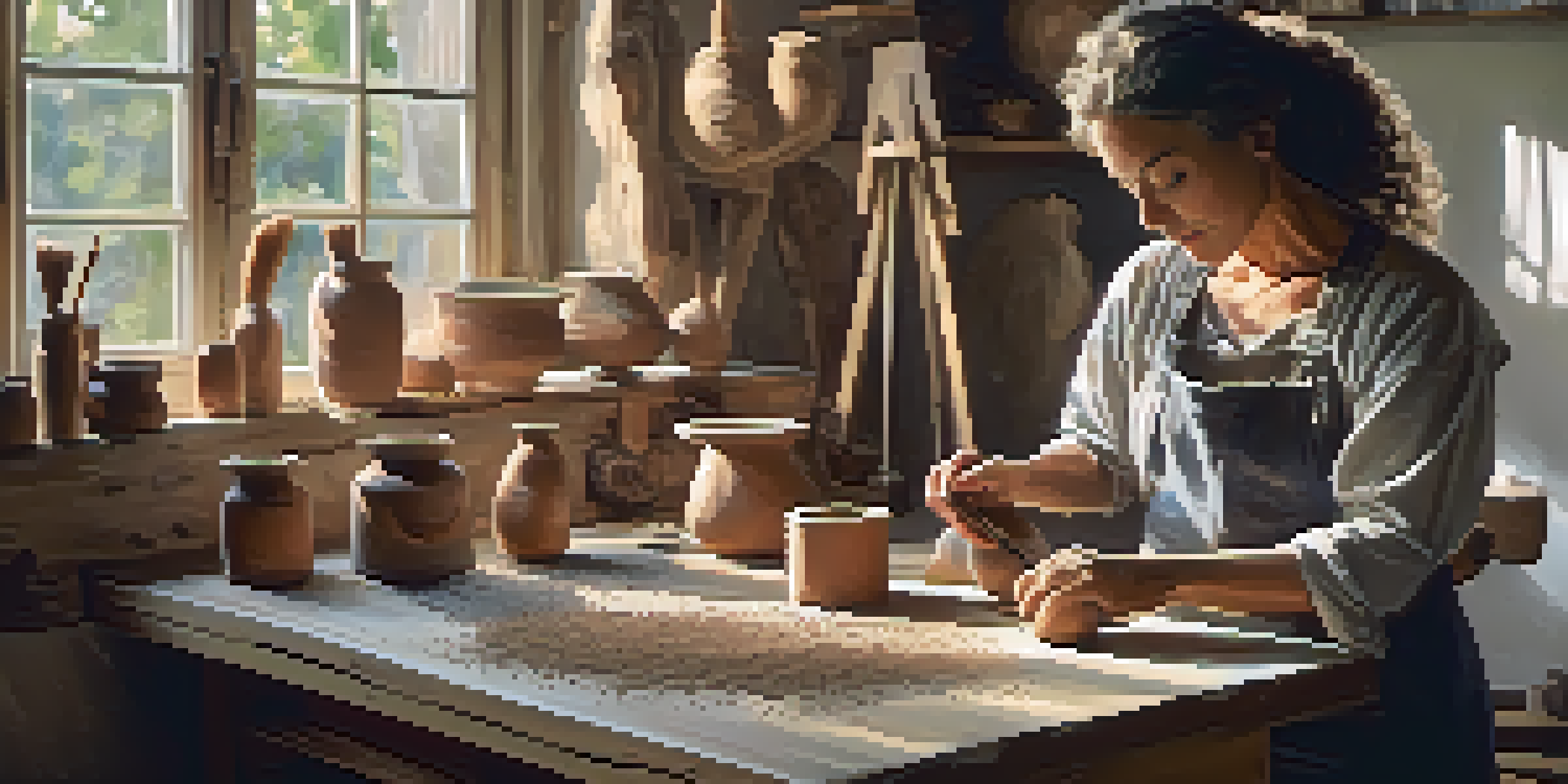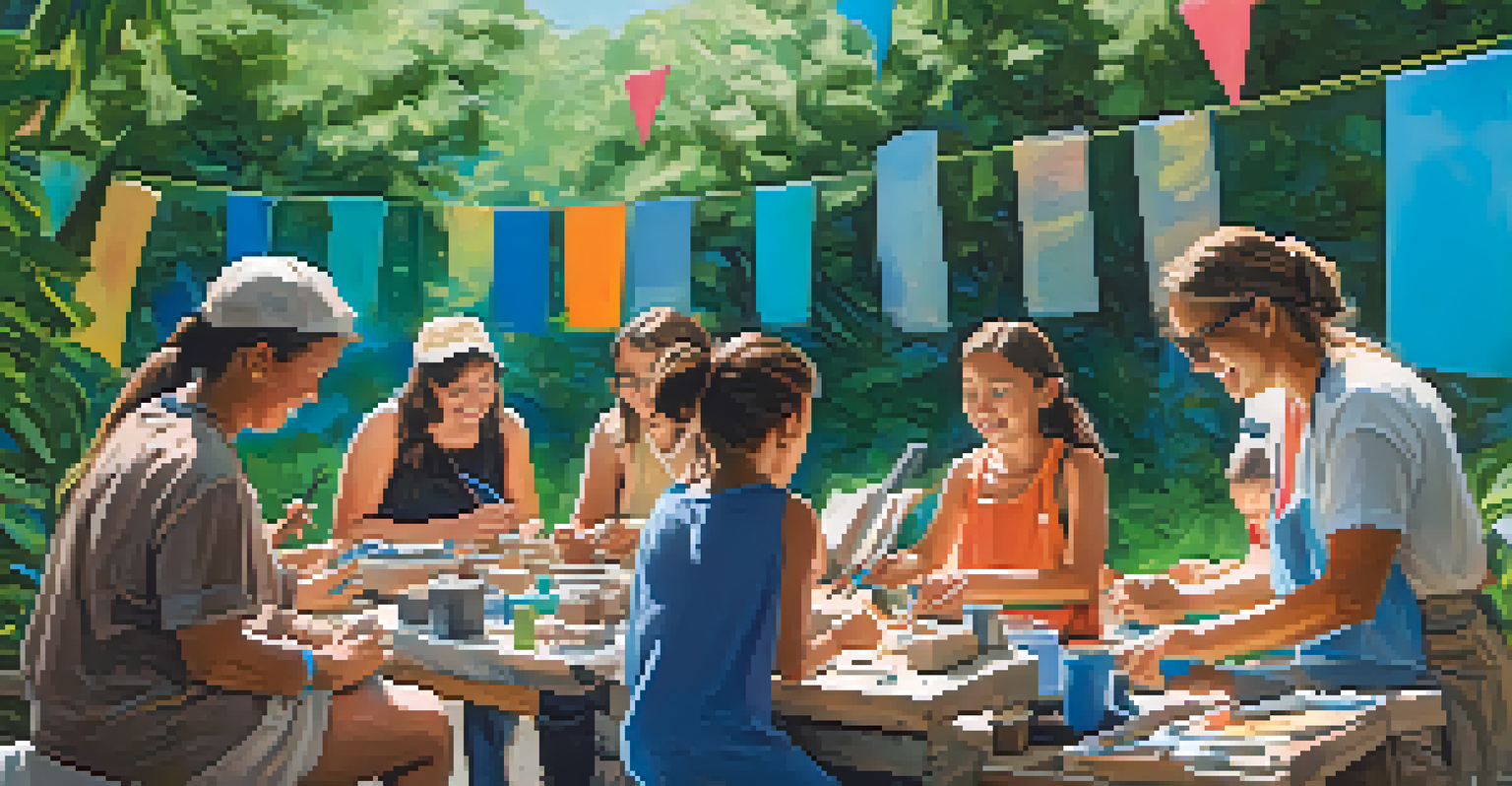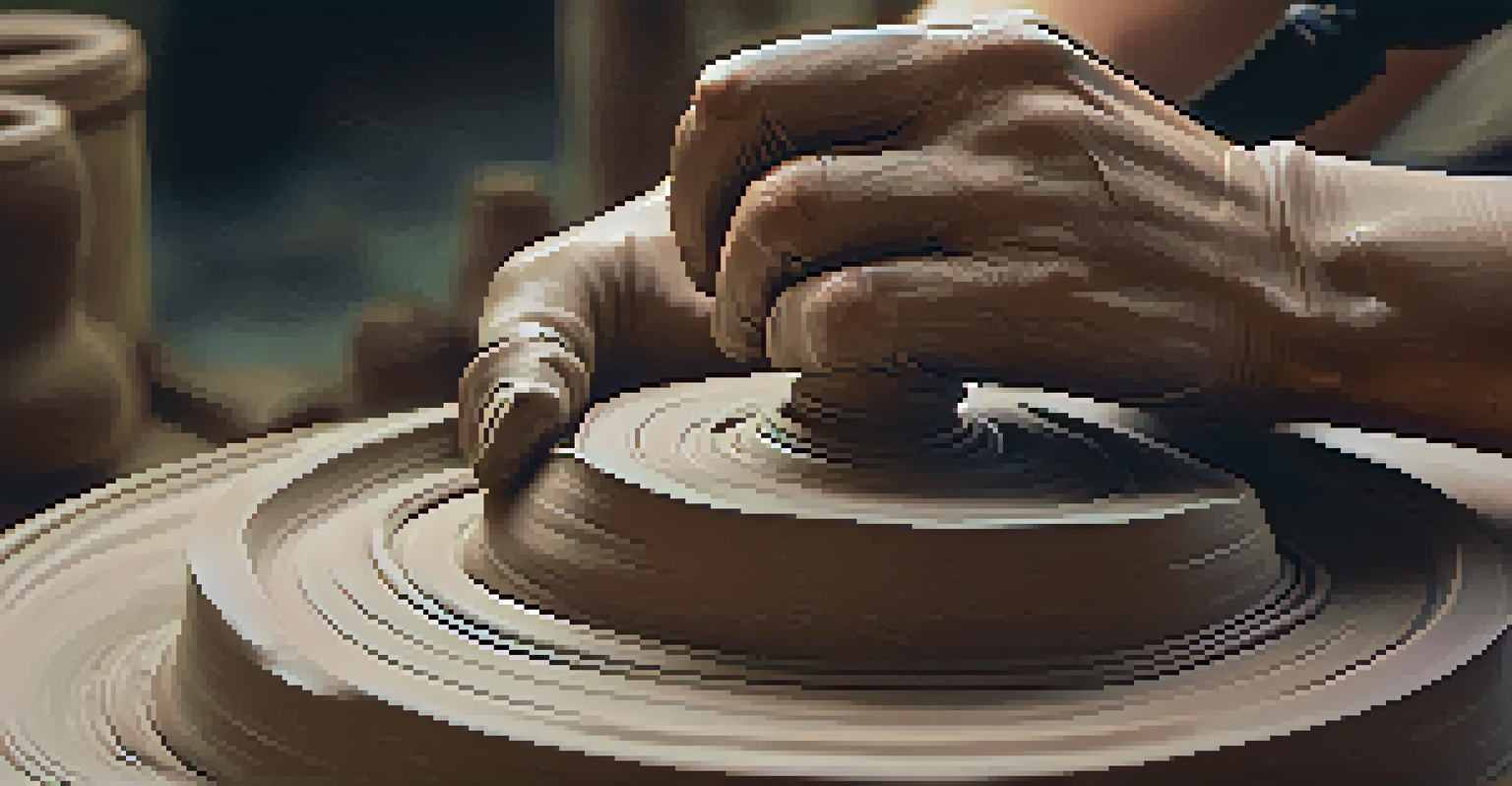Using Sculpture to Facilitate Emotional Healing

The Therapeutic Power of Art in Healing
Art has long been recognized as a powerful tool for healing, and sculpture is no exception. Engaging with three-dimensional forms allows individuals to express emotions that might be hard to articulate verbally. For many, the physical act of sculpting can release pent-up feelings, creating a therapeutic outlet that promotes mental well-being.
Art is the most beautiful of all lies.
Sculpture, with its tactile nature, invites us to touch and interact, enhancing our sensory experience. This hands-on approach can help individuals reconnect with their bodies, fostering a sense of grounding and presence. It’s a reminder that emotional healing often requires us to be fully engaged in the moment.
Furthermore, the creative process of making art can serve as a meditation, allowing thoughts and feelings to flow freely. This meditative state can lead to insights and self-discovery, guiding individuals toward a deeper understanding of their emotional landscape.
Sculpture as a Means of Self-Expression
Sculpture provides a unique avenue for self-expression, often allowing individuals to convey complex emotions without words. Each piece created can reflect personal experiences, struggles, and triumphs, acting as a visual diary of one’s emotional journey. This form of expression can be liberating, especially for those who find it challenging to express their feelings verbally.

For instance, an individual grieving a loss may sculpt a piece that embodies their sorrow, channeling their grief into a tangible form. This not only helps in processing emotions but also creates a connection between the artist and their feelings. In this way, sculpture becomes a symbol of resilience and healing.
Art as a Healing Tool
Engaging with sculpture promotes emotional well-being by allowing individuals to express and process complex feelings.
Moreover, sharing these sculptures with others can foster connection and empathy. When people see a piece that resonates with their own experiences, it can spark conversations that lead to deeper emotional understanding and support.
Creating Space for Reflection and Growth
The act of creating sculpture can also provide a dedicated space for reflection. Artists often find that stepping away from their work allows them to see their emotions more clearly, leading to personal growth. This process encourages individuals to confront and process their feelings, which is a crucial step in emotional healing.
Creativity takes courage.
Additionally, the physical space in which sculpture is created can be a sanctuary for introspection. Whether in a studio or a quiet corner at home, the environment can influence the creative process, allowing for a safe space to explore one’s inner world. This intentional space can help cultivate peace and clarity.
As individuals engage with their sculptures over time, they may notice shifts in their emotional state, providing tangible proof of their healing journey. Each piece can serve as a marker of progress, representing a moment of growth or a lesson learned.
The Community Aspect of Sculpting
Sculpting is not just an individual endeavor; it can also foster community and connection. Group workshops or classes provide opportunities for individuals to share their experiences and support one another in their healing journeys. This communal aspect can create a sense of belonging, which is vital for emotional well-being.
In these settings, participants often find comfort in knowing they are not alone in their struggles. Sharing their sculptures and the stories behind them can create powerful bonds, allowing for vulnerability and empathy. Such connections can lead to powerful healing experiences.
Community Connection through Sculpture
Group sculpting activities foster a sense of belonging and support, enhancing the healing journey through shared experiences.
Moreover, community art projects involving sculpture can bring awareness to shared issues, helping to address societal challenges. This collective effort not only aids individual healing but also promotes a sense of purpose and agency within the community.
Sculpture and Mindfulness Practices
Incorporating mindfulness into the sculpting process can enhance the emotional healing experience. Mindfulness encourages individuals to be present in the moment, which can help them tune into their feelings as they create. This practice fosters a deeper connection between the artist and their work, enhancing the therapeutic benefits of sculpting.
For instance, focusing on the texture of the clay or the movement of their hands can ground individuals, pulling them away from anxious thoughts. This sensory engagement can act as a form of meditation, calming the mind and allowing for emotional clarity. The act of sculpting thus becomes a mindful practice that nurtures emotional healing.
Additionally, reflecting on the emotions that arise during the creative process can lead to greater self-awareness. This awareness is a vital component of emotional healing, helping individuals to understand and process their feelings in a constructive manner.
Exploring Different Materials for Healing
The choice of material in sculpture can significantly impact the emotional healing process. Different mediums, such as clay, stone, or metal, can evoke various feelings and responses, allowing artists to explore their emotions in unique ways. For example, working with soft clay can be soothing, while carving stone might evoke a sense of challenge and resilience.
Each material also has its own properties, which can influence the creative experience. Clay is malleable and forgiving, providing a sense of comfort and ease, whereas harder materials may require more effort and determination, mirroring one’s personal struggles. This relationship with materials can deepen the emotional journey.
Mindfulness in the Creative Process
Incorporating mindfulness into sculpting helps individuals stay present, facilitating emotional clarity and self-awareness.
Experimenting with various materials can also encourage exploration and playfulness in the creative process. Allowing oneself to try new techniques or mediums can lead to unexpected discoveries, both artistically and emotionally, further enriching the healing experience.
Conclusion: Sculpture as a Lifelong Healing Tool
In conclusion, sculpture offers a multifaceted approach to emotional healing that can resonate with individuals on many levels. Whether through individual expression, community engagement, or mindfulness practices, the process of creating three-dimensional art can foster significant emotional growth. As people carve, mold, or assemble their sculptures, they are not just creating art but embarking on a profound journey of healing.
The benefits of engaging with sculpture can extend beyond the studio, influencing one’s daily life and relationships. By nurturing emotional expression and fostering connection, sculpture can become a lifelong tool for healing and self-discovery. It reminds us that creativity can be a powerful ally in our emotional journeys.

Ultimately, whether you are a seasoned artist or a beginner, the act of sculpting can be a transformative experience. Embracing this creative practice can open doors to understanding and healing, making it a valuable addition to anyone’s emotional toolkit.